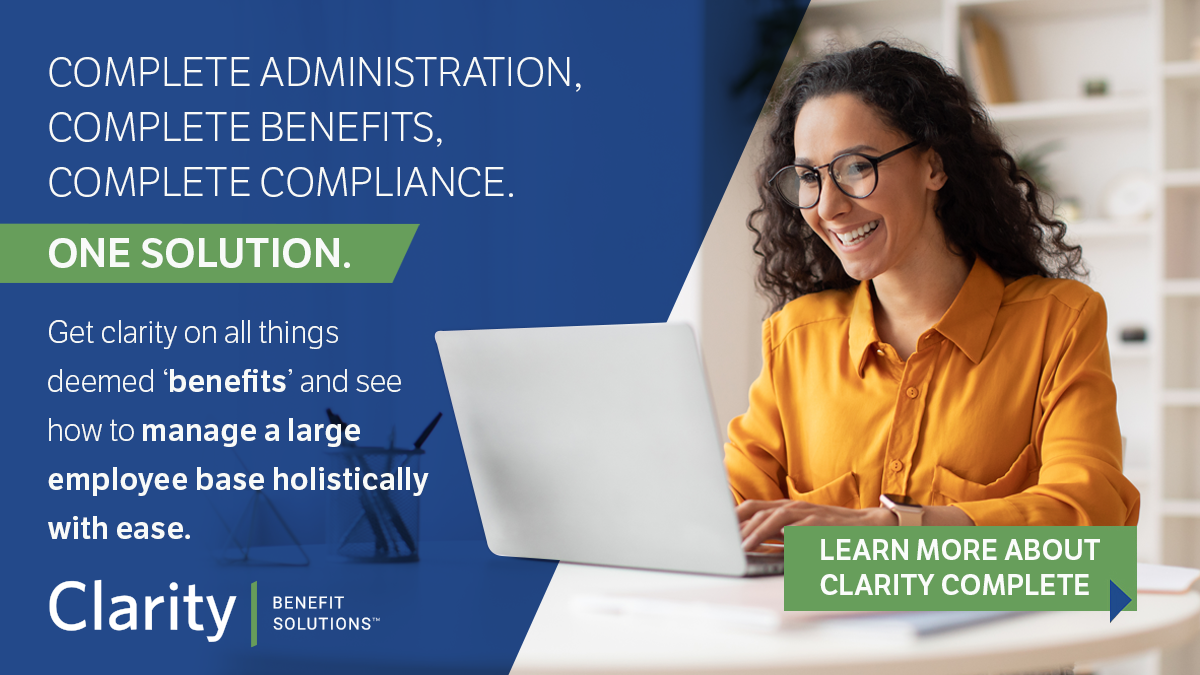
The holidays infuse excitement into the workplace each year. While it’s important to enjoy the energy and cheer, you’ll need to assess how the year went and prepare for the future. The end of the year is a good time to assess employee benefit information, participation, and more. Here, we list four items that should get an annual, end-of-year checkup.
1. Gather, Verify, and Act on Employee Benefit Information
The end of the year is the perfect time to update employee benefit information. Plan to review and verify the following at the very least:
• Retirement Plan Eligibility
Make sure your company has held up their end of the bargain by matching employee contributions. By the end of the year, you should have contributed what you said you would. The end of quarter four is also a good time to have employees verify any personal or account information that needs to be regularly updated.
• Health Benefits
You’ll want to remind employees enrolled in an FSA to spend the rest of the money in the account because any amount not used is lost to them.
• Sick & Vacation Time
Review and confirm the sick and vacation time each employee used during the year. Make sure pay has been withheld correctly, if applicable. And, confirm the accuracy of rollover dates.
2. Assess HSA and FSA Participation Rates
The end of the year is a great time to assess participation rates for FSAs and HSAs. Employers have a lot to gain from these types of accounts. For example, they can save on premiums, taxes, and claims. So, it’s important to make sure a sufficient number of employees are enrolling in them.
If your end-of-year assessment indicates low enrollment rates, here are a few steps you can take to increase enrollment in the upcoming year:
• Create promotional materials to “sell” employees on HSAs and FSAs
• Connect with your benefits provider to make a plan to increase enrollment
• Use technology to assist employees with decision making and enrollment
3. Review The Year’s Healthcare Costs
Before heading into a new year, it’s wise to review how much you’ve spent in healthcare. With increasing healthcare costs, more and more employers find themselves experiencing yearly increases in healthcare expenditures. To protect your bottom line, take the time at the end of each year to assess costs. If you’re paying too much, investigate ways to offset the rising cost of healthcare.
A Health Reimbursement Arrangement Plan (HRA) is an excellent option for those looking to control healthcare costs. You save money by shifting some healthcare costs to your employees and your employees save money by using their HRA to cover out-of-pocket healthcare expenses.
To learn more, connect with your local HRA Company. Most HRA companies offer health reimbursement account administration.
4. Prepare Documents for Affordable Care Act (ACA) Reporting
The Affordable Care Act brings changes to the way you may have typically gone about end-of-year checkups and activities. To avoid penalties in the New Year, start reviewing and preparing for ACA reporting now.
You’ll need to make sure that you have the final forms for this year’s reporting process. They can be accessed here:
1095-B Health Coverage
1094-B Transmittal of Health Coverage Information Returns
1095-C Employer-Provided Health Insurance Offer and Coverage
1094-C Transmittal of Employer-Provided Health Insurance Offer and Coverage Information Returns
Be sure to follow the reporting process as closely as possible. Here are links to instructions:
Instructions for Forms 1094-B and 1095-B
Instructions for Forms 1094-C and 1095-C
Checkups Now Lead to a Prosperous New Year
Reviewing these four items is, arguably, the best way to set yourself up for a successful new year. By updating records and information, identifying what’s working well, and noting areas for improvement, you can establish a plan early, which leaves you with time to put it in action and see results.
